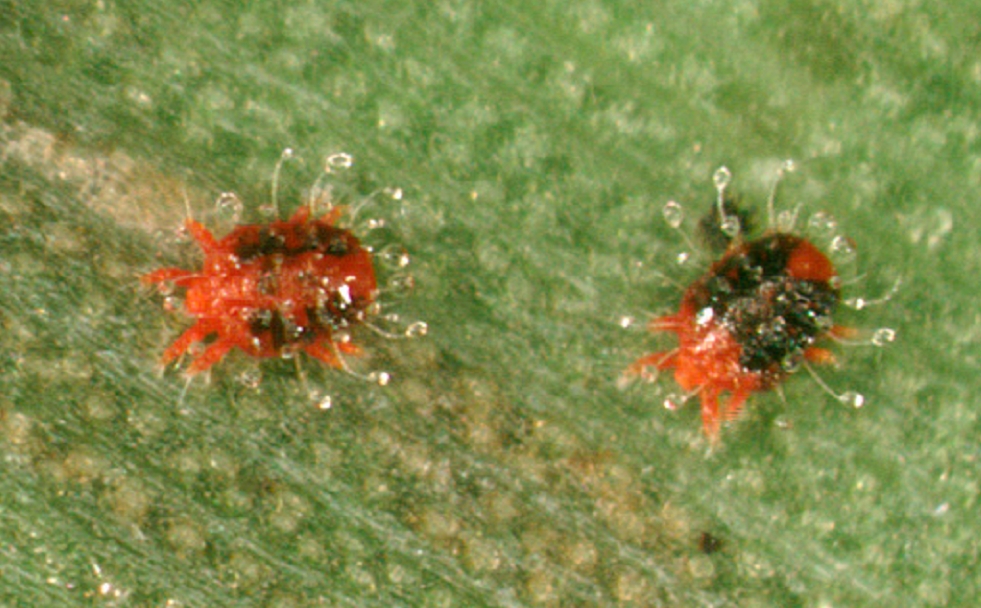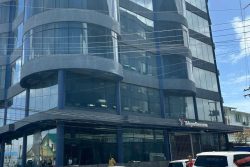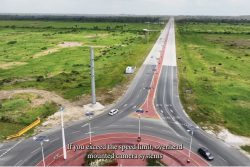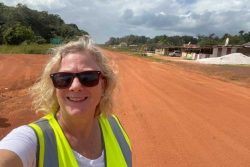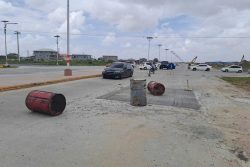The National Agricultural Research and Extension Institute (NAREI) is working assiduously to establish the scale of the infestation of Red Palm Mites on the coconut farms in the Pomeroon area and reduce the spread of the pest.
This is according to Director of NAREI Dr Oudho Homenauth who confirmed to Stabroek News yesterday that the pest is currently affecting plants in Pomeroon area of Region Two Pomeroon/Supenaam.
The Red Palm Mite, Raoiella indica, a pest of several palm species uses it stylet-like mouthparts (chelicerae) to pierce the plant tissue and extract cell contents. This action damages the guard cells of the leaves leading to uncontrollable water loss from the plant. The leaves yellow, then brown before eventually dying and taking the plant with it.
The red mite was first identified in the Caribbean in 2003, since then it has spread presumably by wind currents to more than 12 Caribbean countries now inclusive of Guyana.
At a 2008 invasive species symposium, Red Palm Mite expert Dr Amy Roda revealed that coconut growers in the then affected countries were reporting a 70 per cent reduction in yield. Homenauth however was unable to give data on the effect that the pest has had on coconut production in Guyana.
He told Stabroek News that a team had visited the area last Thursday and another would be going today. The first team established that the pest was indeed Red Mite and the second team will spend the rest of the week in the field conducting an in-depth analysis of the effects as well as conducting sessions with farmers to assist in the management of the parasite.
Coconut is the third largest generator of income for the agricultural sector in Guyana; approximately 25,000 to 30, 000 acres of agricultural land are currently being used to cultivate coconut palms. This includes dried as well as water coconuts with water nuts mainly coming from the Pomeroon area.
“It is necessary for a proper analysis to be done to ascertain the type and extent of the infestation” Homenauth said, “since several other insects can produce similar symptoms in the plant we could not formulate an approach until we knew what we were dealing with.”
He further noted that this infection has been spreading across the Caribbean with many efforts having been made to control its spread. He revealed that “two months ago the Food and Agricultural Association (FAO) of the United Nations had sent experts to work with NAREI on methods used to control the red palm mite.”
Coconut trees, according to Homernauth, are particularly difficult to treat since it is virtually impossible to spray every tree on a large farm covered in 20 ft tall palm trees. He added that aerial spraying is not possible because the pesticide may get into the soil and water table, negatively affecting not just crop but also animal and human life. Investigations are instead being conducted into the use of cultural controls such as the introduction of natural predators of the mite including certain species of wasp and lacewing beetles.
Homernauth stressed that any efforts at species control must be an integrated approached which addresses other host plants of the insect such as wild Heliconia, plantains and bananas.
The immediate plans of NAREI, he revealed are “to establish the scale of the infestation and reduce its spread perhaps by using more friendly chemicals. To this end the institute is committed to working with its regional partners to manage this infestation since they recognise that it is unlikely to be eradicated.”
Meanwhile general agriculturist, Chandrika Persaud who has worked with the coconut plant for over 30 years in several countries has called for NAREI to be more proactive in addressing issues in the coconut industry. He believes that there is a need for persons from the institute to constantly be in the field interacting with farmers and consulting local specialists.
Speaking with Stabroek News he said that the Red Palm Mite is only one of several pests and diseases affecting the coconut plant.
According to Persaud, “farmers in the Pomeroon River, Essequibo Coast and the coast land of Guyana are crying and afraid they will be out of earnings from their coconut estate, since the crop is severely affected by pests and diseases. Some of the pests affecting the coconut palms in this area are Coconut Eriophyid Mite, Mealy Bug/Soothy Mould, Scale Insect, Red Palm mites and Nemathode. Diseases are Basal Stem end Rot, Root Wilt, Leaf Blight / Grey Leaf Spot, Bud Rot, Cedros Wilt and Red Ring.”
He said, “Current trends in the sugar and rice industry could see coconut soon being the number one crop if properly managed and supported by the relevant authority.”
The pests and diseases affecting the crops should be treated as a national issue and be given priority so as to boost the yield of this crop as well as its value added industries, he added.
